Scientists, students and teachers filled George Washington University’s Charles E. Smith Center Saturday, looking for ways to transform education in the areas of science, technology, engineering and mathematics. The atmosphere was like a rowdy, hands-on science museum. Adults and children alike watched homemade robots grapple, made clay models of the musculature of the human hand and were horrified by a blackened, deflated pair of smoker’s lungs.
All were participating in the STEMosphere® , the centerpiece of Share Fair, an annual interactive symposium that celebrates innovative teaching and learning tools. In Duquès and Funger halls, teachers participated in smaller “classroom intensive” workshops on topics like incorporating virtual reality into the classroom and engineering design through service learning.
“I would say [Share Fair] is among the top three most fun and interesting and exciting things we do,” said Michael Feuer, dean of the Graduate School of Education and Human Development. “It’s a great example of what is so special about innovation.”
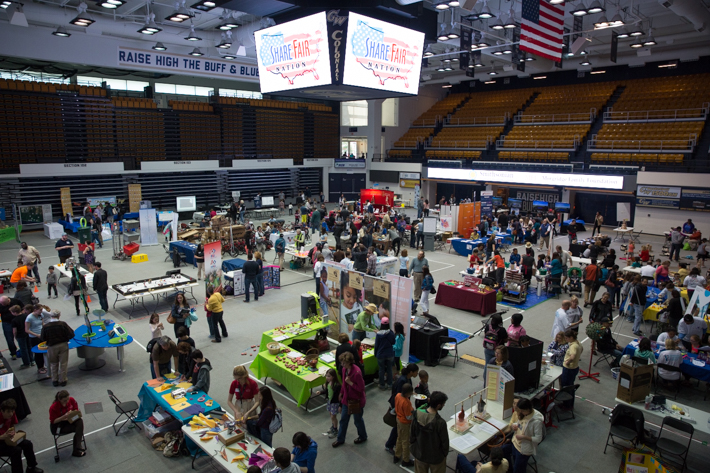
Exhibitors crowded the floor of the STEMosphere in the Charles E. Smith Center.
This is the second year that GW has hosted Share Fair, which was sponsored by the Morgridge Family Foundation in partnership with the Smithsonian Science and Education Center.
At one booth, Professor Sara Hooshangi of the College of Professional Studies and two undergraduate students held educational sessions as part of their service learning. They measured participants’ bioelectric systems. Using a dynometer they said was inexpensive enough to be available to many K-12 students, they hooked up volunteers to simple electrodes and let them watch their own heart rates jitter into life on the screen of a laptop while watching an instructive video of a heart in action.
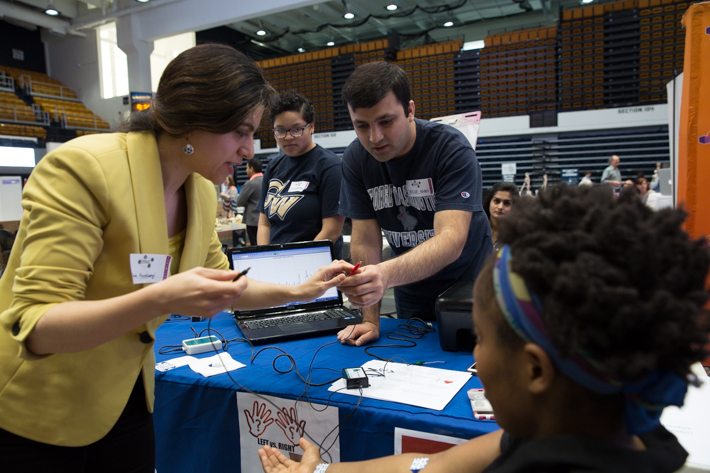
(Left to right) Professor Sara Hooshangi, Jenny Nguyen and Naeem Khan show a volunteer her own heartbeat.
“We can actually teach teachers how to make education more interesting,” said CPS student Jenny Nguyen.
Her classmate Naeem Khan agreed. “Giving students hands-on experience with information technology helps them see the range that’s out there,” he said. “If you’re in IT, you’re not just sitting around tapping keys. You can be programming, analyzing, really getting into the data.”
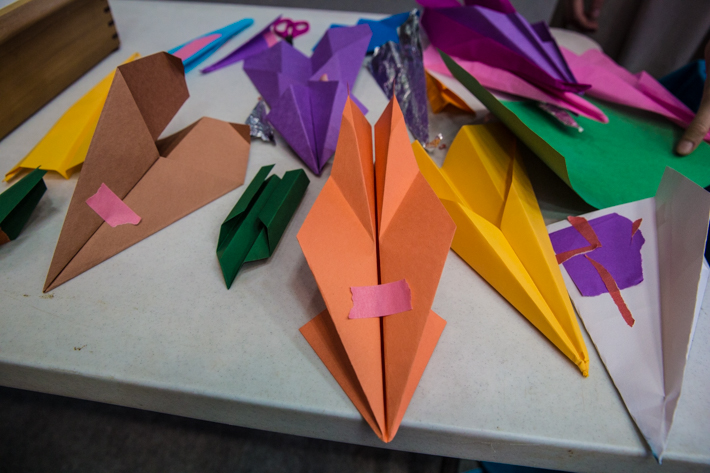 Volunteers from the Smithsonian Air and Space Museum helped visitors make aerodynamic paper planes.
Volunteers from the Smithsonian Air and Space Museum helped visitors make aerodynamic paper planes.
Exhibitors included FIRST Robotics, a competitive pipeline for students that turns robotic engineering into a varsity sport; Anatomy in Clay, which teaches medical as well as K-12 students how to construct the muscles of the human body on a scaffold of bone; and FEI, which gave visitors a preview of the capabilities of the high-performance microscopes that will soon be installed in GW’s Science and Engineering Hall—microscopes so powerful that, using a telescope of equivalent viewing power, a viewer on the moon could identify a tennis ball on the surface of the Earth.
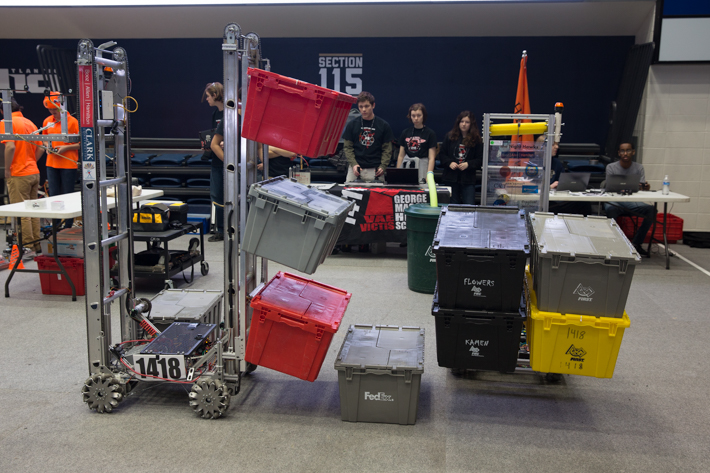 First Robotics competitors devised robots to efficiently stack recycling containers.
First Robotics competitors devised robots to efficiently stack recycling containers.
But not every innovation was a technological one. Mollie Manier, an assistant professor of biology, showed participants at her booth how to extract DNA from strawberries using salt, hand soap and ethanol. As kids and adults alike gleefully pulverized their fruit and made faces over the goopy strings of genetic material that emerged, she smiled.
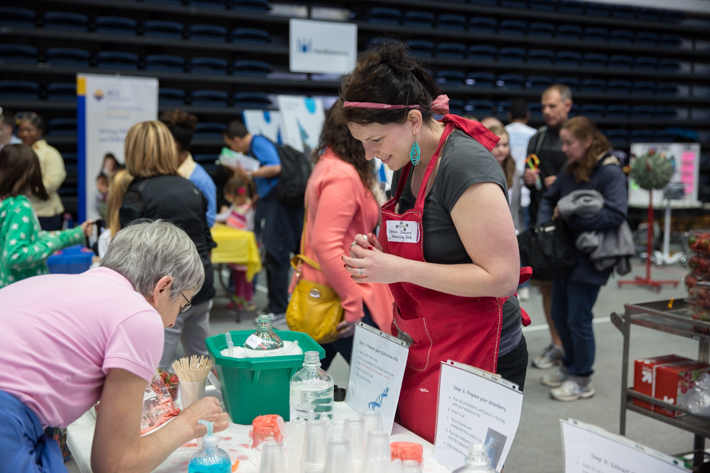
A student of Mollie Manier shows participants how to extract DNA from strawberries.
“It’s good for teachers to get hands-on,” Dr. Manier said. “We all need to get a little primal on our Saturdays.”


